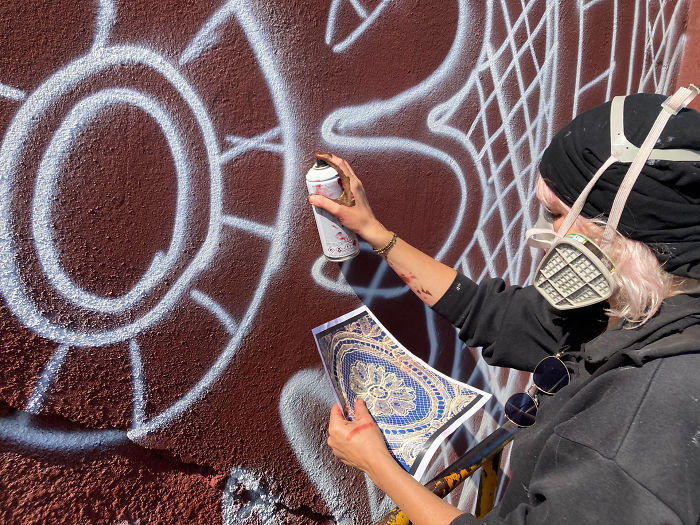
Warsaw-Based Artist Spray-Paints A Beautiful Lace Mural On The Side Of A French Lace Museum
Calais is a city in northern France famous for its lace-making tradition. Turns out, back in the late 19th century, many textile artists and engineers from England immigrated to Calais to escape economic and social difficulties, turning the city into an industrial hub for lace manufacturing. Back then, around 40,000 of the residents were working in the local lace factories.
The French Museum of Fashion and Lace, Cité de la Dentelle et de la Mode, was opened in a restored 19th-century factory building to honor the lace-making tradition in the city of Calais. Recently, one of the walls of the museum was graced by the hands of the Warsaw-based artist NeSpoon, who spray-painted it with an intricate lace design.
More info: Instagram | behance.net | Facebook
The museum is located in the city of Calais, which is well known for its lace-making tradition
Image credits: NeSpoon
The artist describes all her works as being “somewhere in between street art, pottery, painting, sculpture, and jewellery.” Most of NeSpoon’s works consist of prints of traditional laces made in clay or painted on walls.
It’s housed in a restored 19th-century factory building
Image credits: NeSpoon
“Why laces? Because in laces there is an aesthetic code, which is deeply embedded in every culture. In every lace we find symmetry, some kind of order and harmony, isn’t that what we all seek for instinctively?” reads the artist’s Behance profile.
Most of NeSpoon’s works consist of prints of traditional lace
Image credits: NeSpoon
“Calais in northern France is famous for its lace-making tradition. In the past, local factories employed 40,000 people in the lace-making industry,” reads the description of the project. “Today in the city exists a unique lace museum. It is housed in a recently restored 19th-century factory building. In addition to the great collection of lace, it holds 200-year-old, still working lace-making machines. Learning how to control this machine at the master level took up to 12 years. The weaving master controlled 11,000 threads at the same time.”
For this project, the artist chose a machine lace pattern designed in 1894 that she found in the museum archive
Image credits: NeSpoon
For this particular project, the artist chose to spray-paint a machine lace pattern that was designed in 1894. She happened across this pattern in one of the catalogs available in the museum archive.
Here’s a little video from the artist’s Instagram profile, capturing the process of spray-painting
View this post on Instagram
“Why laces? Because in laces there is an aesthetic code, which is deeply embedded in every culture”
Image credits: NeSpoon
Here’s what people think about this intricate mural
11Kviews
Share on Facebook
 Dark Mode
Dark Mode 

 No fees, cancel anytime
No fees, cancel anytime 






























































171
11